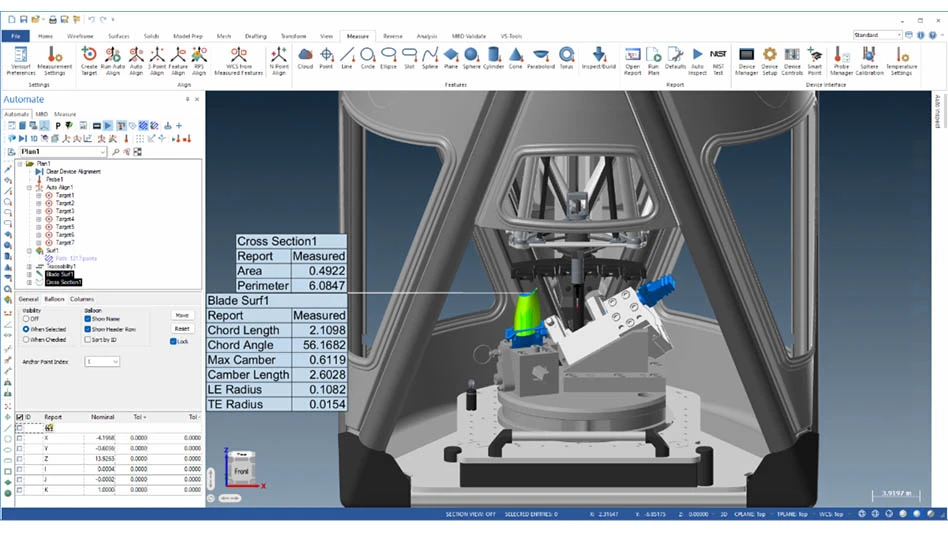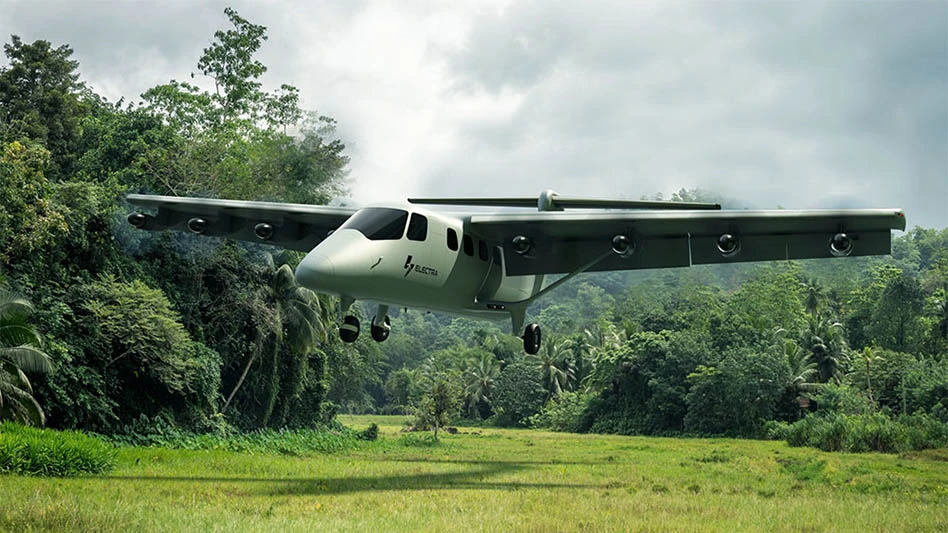
At the first Farnborough International Airshow (FIA) since 2018, the news wasn’t about numbers of jetliners sold, the state of the economy, or the war in Ukraine – the recurring theme was sustainability. Talking points in press conferences, forum presentations, and news releases; signage on chalets, in exhibit halls, and aircraft – nearly all contained references to sustainability. Reducing the environmental impact of aviation was given more urgency by record heat in the south of England, where temperatures the first two days of the airshow topped 100°F (38°C). Achieving the goal of net-zero carbon emissions by 2050 has been a talking point in Europe, but has become a global initiative, with the major original equipment manufacturers (OEMs) putting the topic at the forefront.
Sustainability has different meanings depending on who’s describing it, but most include measures to reduce aviation’s climate impact. Decarbonization isn’t necessarily about taking soot out of jet engine exhausts – it also comes from reducing aircraft weight with better designs to reduce fuel consumption. It can be software optimizing flight routes and reducing fuel use. Replacing older airliners with new ones powered by higher efficiency engines is a major way to reduce fuel consumption. Jet fuel can be produced with more eco-friendly feed stocks, making sustainable aviation fuel (SAF) a frequently cited solution.
Limiting carbon
Boeing’s overview presentation noted aviation currently amounts to 2.6% of global carbon emissions, but Boeing Chief Sustainability Officer Chris Raymond warns if the industry does nothing, aviation’s percentage will increase as other industry sectors, notably automobiles, lower emissions.

Boeing introduced Cascade, an online calculator using credible data and analytical models, allowing users to adjust numerous variables such as renewable energy sources, operational efficiency improvements, fleet renewal, and advanced technologies to determine their impact on reaching the 2050 goal.
Boeing plans to share the Cascade tool with airline operators, industry partners, and policymakers to inform when, where, and how different fuel sources intersect with new airplane designs. Later in the airshow, Boeing officials announced a three-year project, Pathways to Sustainable Aviation, with the Massachusetts Institute of Technology (MIT) to evaluate technical and economic factors that contribute to a more sustainable aerospace future. Throughout the project, findings will be integrated into Cascade.
“We have to take a holistic view to decarbonization,” Raymond says. “When we do that, it’s clear that SAF is a necessary lever. We know it’ll take a ‘SAF and’ and not ‘SAF or’ to achieve net-zero by 2050.”
Despite announcements across the industry on developing hybrid propulsion, electric motors, and hydrogen for fuel cells or direct combustion – none alone are likely to make more than a few percentage points’ difference in aviation’s carbon footprint in the countdown’s remaining 27+ years. SAFs, already in limited use, currently offer the greatest carbon reductions, especially if 100% SAF made from completely renewable resources is widely adopted. It’s more a matter of scaling production than designing engines to run on non-aromatic fuels, experts say. “What’s possible? What makes economic sense?” Raymond asks.
Airbus offered days of panel discussions revolving around sustainability – from commercial flight to military aircraft – in its Aerospace Global Forum. The opening included a pre-recorded video address by Britain’s Prince Charles, an advocate for greener industry and environmental restoration.

Among the pathways toward sustainable aviation, he says, “SAF is a priority” and global investors and energy companies must help finance the SAF industry in developing countries. “The real risk is in not taking risks. We can’t afford not to act,” he says.
Airbus CEO Guillaume Faury reiterated his company’s commitment to be carbon-neutral by 2050, noting that most jet engines can burn 50% SAF now, but less than 1% are using it.
Robin Riedel, partner and co-leader, McKinsey Center for Future Mobility, put some numbers to what it’ll take to decarbonize. Achieving carbon-neutral growth through 2030 will require $40 billion to $50 billion in funding annually, with about $175 billion required through 2050. About 80% to 90% of the investment goes to producing SAF. The remainder goes to developing battery-electric, hybrid-electric, and hydrogen aircraft, and the renewable electricity and green-hydrogen production plants required to power them.
Reidel points out why novel propulsion will remain secondary. “There’s a lot of uncertainty about these solutions – we’re waiting to find out if they’ll work.” Meanwhile, SAF made from biomass remains the leading energy source of the future.
“Aircraft now are 20% more fuel efficient than the ones they’re replacing, and estimates are that up to 50,000 aircraft will be built to 2050,” Reidel says. But it’s unrealistic to expect 100% fleet replacement by then. “Most planes being sold now will still be flying in 2050,” Reidel notes. That likelihood, and the long timelines needed to develop and commercially scale aircraft propulsion systems, means the era of turbine-powered jetliners is nowhere near its end.
Supersonic sustainability
Boom Supersonic, the company working to develop the world’s fastest airliner since Concorde, presented the refined design of its Overture airliner at FIA 2022. Using 100% sustainable aviation fuel, Overture is designed to fly 65 to 80 passengers a distance up to 4,250nm at double the speed of today’s airliners – Mach 1.7 – over water.
“Overture has been developed from the beginning to be net zero carbon, flying on 100% SAF. Sustainability is woven into all aspects of Overture, from design and production to flight and end-of-life recycling,” the news release states. The airliner will fly without afterburners, saving fuel while meeting the latest subsonic airplanes’ noise levels.
Boom’s founder and CEO Blake Scholl explains Overture’s redesign was based on 26 million core-hours of simulated software designs, five wind tunnel tests, and careful evaluation of 51 full design iterations – all to produce an economically and environmentally sustainable supersonic airliner. Most noteworthy among the changes from the pre-pandemic model are curving gull wings to enhance supersonic performance and improve subsonic and transonic handling, plus an area-rule fuselage shaped to minimize drag and maximize fuel efficiency at supersonic speeds.

Boom’s other major announcement was a partnering agreement with Northrop Grumman to develop special mission variants of Overture for the U.S. government and its allies. The two companies will pursue use cases for Overture in rapid response operations, including quick-reaction surveillance and reconnaissance, command and control, and emergency medical and troop transport.
Joining Overture’s supply chain are Safran, to develop landing systems; Eaton, for fuel distribution, measurement, and inerting systems; and Collins Aerospace, to provide air data system architecture and a system that prevents ice forming on the aircraft during flight.
Slow and sustainable
At the opposite end of the speed spectrum, Collins Aerospace is producing a prototype 500kW electric motor for Hybrid Air Vehicles’ Airlander 10 airship in partnership with the University of Nottingham, U.K.
“New sustainable electric propulsion technologies will advance the aviation industry’s efforts to reach net-zero carbon emissions by 2050,” notes Eric Cunningham, Collins’ vice president of electric charging systems. For the 2,000rpm permanent magnet electric motor, Collins is targeting specific power density levels of 9kW/kg and 98% efficiency using a novel motor topology and composite construction.
“The innovative technology… positions Collins in the UK for the scaling of high-performance electric motors for future commercial aircraft platforms,” says Mark Scully, head of technology for Advanced Systems & Propulsion at the Aerospace Technology Institute.
Tom Grundy, CEO of Hybrid Air Vehicles (HAV), notes the Airlander, which uses helium and aerodynamics for lift, already offers 90% lower carbon emissions than other aircraft in comparable roles using four fuel-burning engines. That claim applied to the prototype, anyway, which last flew in 2017. Grundy is seeking to build three new test vehicles, begin hybrid-electric operation in 2026 with two Collins’ 500kW electric motors, followed by all-electric operation in 2030.

Explore the August September 2022 Issue
Check out more from this issue and find your next story to read.
Latest from Aerospace Manufacturing and Design
- Demystifying Controlled Unclassified Information (CUI)
- Simplify your shop floor operations while ensuring quality parts
- Happy Independence Day - July 4th
- Bombardier receives firm order for 50 Challenger, Global jets
- Automatic miter bandsaw
- SAS orders 45 Embraer E2 jets with options for 10 more
- Height measuring instrument
- Shopfloor Connectivity Roundtable with Renishaw & SMW Autoblok





